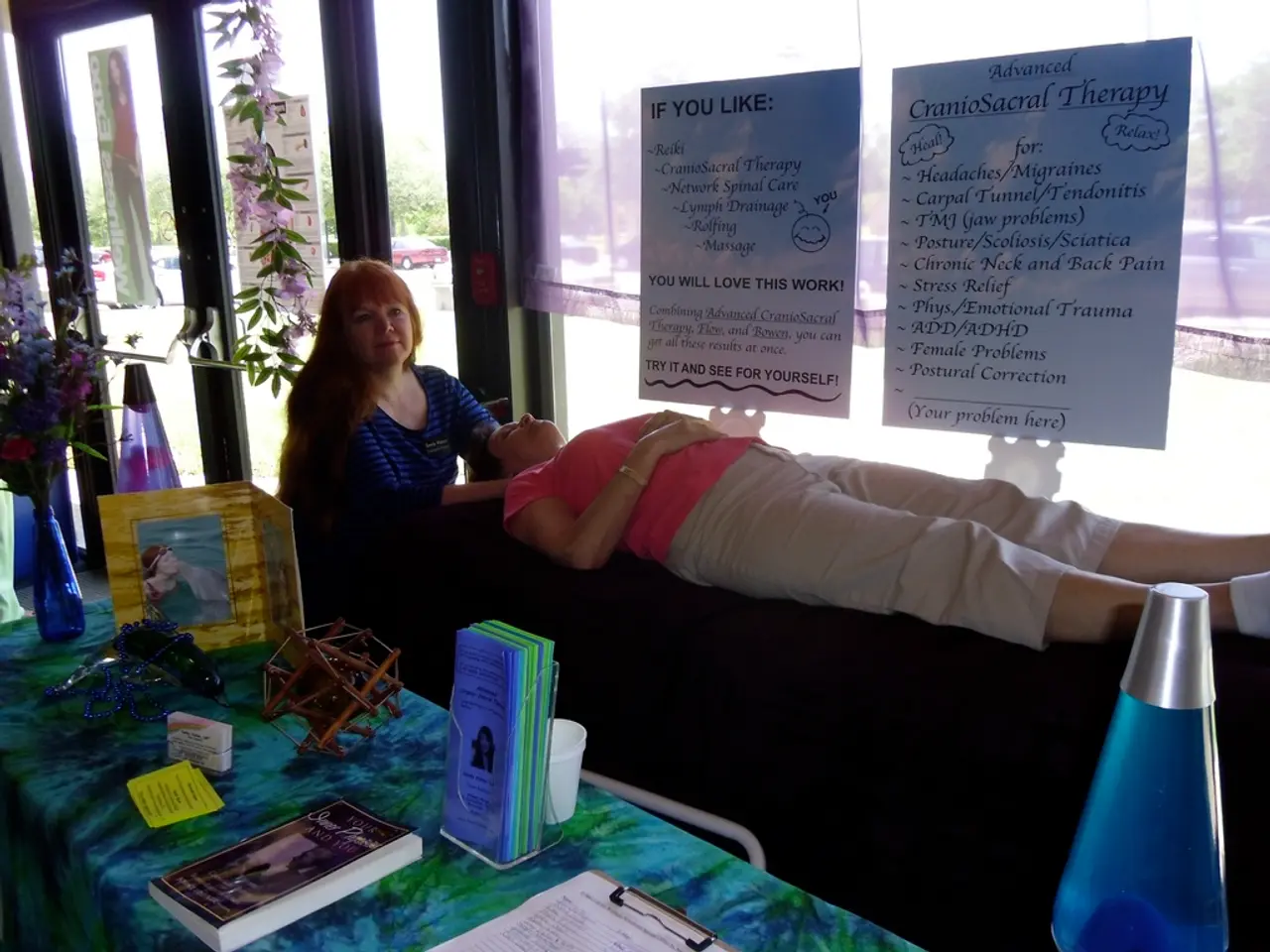Recognizing Panic Disorder: Symptom Identification and Treatment Strategies
**News Article: Understanding Panic Disorder and Generalized Anxiety Disorder**
Panic disorder and Generalized Anxiety Disorder (GAD) are two distinct types of anxiety disorders that can significantly impact a person's daily life.
**Panic Disorder** is characterized by **recurrent and unexpected panic attacks**. These attacks involve sudden periods of intense fear or discomfort, often accompanied by physical symptoms such as difficulty breathing, chest pain, increased heart rate, and a fear of losing control or dying. To be diagnosed with panic disorder, an individual must experience recurrent panic attacks and have at least four of the following 13 symptoms: palpitations, abnormal sweating, trembling, shortness of breath, choking sensation, chest pain, stomach distress, feeling faint, heat sensations or chills, numbness or tingling, feelings of being detached from reality, fear of loss of sanity or control, and mortal fear [1][2].
Treatment for panic disorder typically involves a combination of psychotherapy, medication, and lifestyle adjustments. Cognitive Behavioral Therapy (CBT) and Exposure Therapy are effective forms of psychotherapy that help identify and modify negative thought patterns and develop coping strategies. Antidepressants and benzodiazepines may be prescribed to manage symptoms, while stress management, exercise, and improved sleep hygiene are recommended as lifestyle adjustments [1][5].
**Generalized Anxiety Disorder (GAD)**, on the other hand, is marked by **persistent and excessive worry** about everyday things, even when there is no apparent reason to worry. Symptoms include restlessness and feeling on edge, difficulty concentrating, sleep disturbances, and irritability [4]. The treatment for GAD often includes psychotherapy, medication, and lifestyle changes. CBT is effective in treating GAD by teaching coping strategies and changing negative thought patterns. Antidepressants and benzodiazepines are commonly used, while stress management techniques, relaxation exercises, and regular physical activity are recommended [4].
While panic disorder and GAD share some similarities, there are key differences between the two. Panic disorder involves recurrent panic attacks with intense physical symptoms, while GAD is characterized by persistent and chronic worry. The symptoms focus of each disorder also varies, with panic disorder focusing on the sudden onset of intense fear during panic attacks, whereas GAD involves ongoing, pervasive worry [2][4].
It is important to note that anxiety attacks, a term sometimes used interchangeably with panic attacks, are not a medically recognized term but may refer to any intense experience of anxiety. Panic attacks are more specific and linked to panic disorder [2].
Both disorders can have a significant impact on a person's life, with about 45% of U.S. adults with panic disorder experiencing serious impairment in their daily lives due to fear of panic attacks. People with severe panic disorder might use the healthcare system more, leading to substantial doctors' bills and ER costs. Data from the National Comorbidity Survey Replication (NCS-R) show that panic disorder is more than twice as common in women than men [3].
Behavioral interventions such as therapy have been proven more effective than medications in improving anxiety symptoms and preventing recurrence of panic attacks. The best treatments for panic disorder are cognitive behavioral therapy (CBT) and mindfulness interventions [5]. If you or someone you know is experiencing symptoms of panic disorder or GAD, it is important to seek help from a healthcare professional.
[1] American Psychiatric Association. (2013). Diagnostic and Statistical Manual of Mental Disorders (5th ed.). Arlington, VA: American Psychiatric Publishing. [2] Barlow, D. H. (2010). Anxiety and its disorders: The nature and treatment of anxiety and panic (4th ed.). New York, NY: Guilford Press. [3] Kessler, R. C., Berglund, P., Demler, O., Jin, R., Merikangas, K. R., & Walters, E. E. (2005). Lifetime prevalence and age-of-onset distributions of DSM-IV disorders in the National Comorbidity Survey Replication. Archives of General Psychiatry, 62(6), 593-602. [4] National Institute of Mental Health. (2019). Anxiety disorders. Retrieved from
Science has shown that both Panic Disorder and Generalized Anxiety Disorder (GAD) can be managed effectively through a combination of psychotherapy, medication, and lifestyle adjustments. Specifically, cognitive behavioral therapy (CBT) has been found to be an effective form of psychotherapy in identifying and modifying negative thought patterns, and developing coping strategies for both panic disorder and GAD (National Institute of Mental Health, 2019). The importance of mental health, including understanding and addressing anxiety disorders like panic disorder and GAD, falls under the broader field of health-and-wellness.




